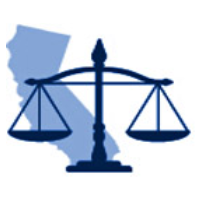Courts Aim Lower after Blowing $500 Million on a Failed Computer System

Now that the $1 billion computer system that was going to link California’s judiciary has been mothballed (with half the money spent), the 58 trial courts that offered fairly uniform resistance to the effort are starting over on their own.
The trial courts fought with the Administrative Office of the Courts, the judiciary’s centralized bureaucracy, for years over what they perceived as an overly bureaucratic, needlessly centralized system that cost too much and wasn’t going to work.
The trial courts won bragging rights when the state pulled the plug on funding for the project last year. Instead of a centralized, uniform system that all jurisdictions would need to implement, individual courts are hiring private vendors and can choose to participate at varying levels depending on their resources and needs, according to the Courthouse News Service.
“The HMS CCMS [California Court Case Management System] has been hit by the iceberg and sunk,” Judge Robert Moss of Orange County said at the time. “We have 58 lifeboats out there. Some have crewmen on board to row and oar and some don’t.”
Thirteen of those lifeboats and their information technology (IT) workers joined forces in selecting three private software vendors to provide a template for a case management system, similar to ones used in other states, that could be deployed on a voluntary basis to individual courts. Critical decisions, like whether to store sensitive data locally or remotely, probably won’t be made by a central authority.
The CCMS would have replaced 70 different systems already in place—many of which cannot talk to each—and result in a single system for all 58 Superior Courts. It was meant to enable the public to e-file documents, access information and make payments via the internet. Judges and law enforcement would have real-time access to court information. The courts could communicate directly with each other, coordinate scheduling and interface with state agencies.
Its critics say it did none of this, although a form of the system was installed in Orange County Superior Court and is performing to decidedly mixed reviews.
The decade-long fight over the computer system exposed deep political divisions within the judiciary between its trial courts and central authority, emanating from the California Supreme Court chief justice. Conflicts over priorities and distribution of limited resources have been exacerbated in recent years by heavy budget cuts.
The courts, in response to losing $1 billion in funding over the past five years, have closed courthouses, reduced services and hours, and delayed cases.
In an interview with the Public Policy Institute last week, Chief Justice Tani Cantil-Sakauye warned, “We're looking at the dismemberment of the judicial branch.”
–Ken Broder
To Learn More:
Three Software Firms Chosen for Lucrative Business in CA Courts (Maria Dinzeo, Courthouse News Service)
California’s Chief Justice Warns that without Funding Courts Face “Dismemberment” (by Maria Dinzeo, Courthouse News Service)
It's Court v. Court after Demise of Judicial Computer System (by Ken Broder, AllGov California)
- Top Stories
- Controversies
- Where is the Money Going?
- California and the Nation
- Appointments and Resignations
- Unusual News
- Latest News
- California Forbids U.S. Immigration Agents from Pretending to be Police
- California Lawmakers Urged to Strip “Self-Dealing” Tax Board of Its Duties
- Big Oil’s Grip on California
- Santa Cruz Police See Homeland Security Betrayal in Use of Gang Roundup as Cover for Immigration Raid
- Oil Companies Face Deadline to Stop Polluting California Groundwater





